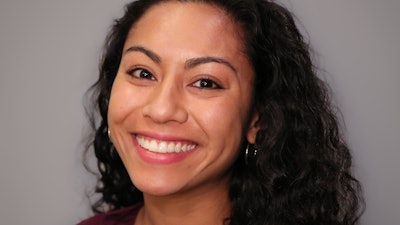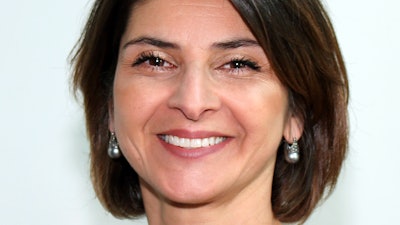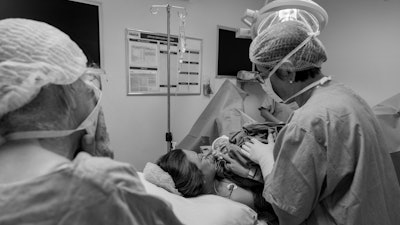On June 29, the Supreme Court of the United States (SCOTUS) made the decision to officially end affirmative action practices at all public institutions in the U.S. The ruling sent medical schools across the nation scrambling to adjust admission standards to abide by the new law of the land.
 Dr. Jessica Faiz.
Dr. Jessica Faiz.
“These barriers [to entry] manifest early, prior to even applying to medical school,” says Faiz. “This is why we really can’t be doing enough to recruit underrepresented groups to medicine, and why the recent Supreme Court decision really sets us back, while we are already behind.”
Only 5.7% of U.S. physicians are Black, and 6.9% are Latinx. Pacific Islanders and Native Americans combined make up just 0.4% of physicians. The vast majority (63.9%) are white, followed by Asian Americans at 20.6%, according to 2022 data from the Association of American Medical Colleges (AAMC).
These numbers “trail far behind the national population,” says Faiz.
Multiple studies have shown a direct correlation between quality of care and if the patient and doctor are of the same race, with patients doing better overall if at least one physician of color was part of their care team. After COVID-19, life expectancy dropped for all Americans, but most dramatically in communities of color.
The direct impact of the SCOTUS ruling — how many fewer individuals of color have been admitted to medical programs this fall — is still unknown. But there are predictors. Nine states in the U.S. had already outlawed the use of race in their admissions long before this ruling. In 1996, California passed Proposition 209, which ended all affirmative action in the state.
“People don’t realize that Prop 209 was actually more restrictive than the SCOTUS ruling. It bans affirmative action not only in race but other protected categories, and not just in admissions but in hiring practices and awarding money,” says Dr. Mark Henderson, associate dean of admissions and vice chair for education in the Department of Internal Medicine at the University of California (UC) Davis.
 Dr. Mark Henderson
Dr. Mark Henderson
“Those students’ enrollments went way down, across the system. In the eight other states with affirmative action bans, they all resulted in similar declines in enrollment of those groups,” he says.
Lessons learned
There is a bright side. In the almost 30 years since Proposition 209 was passed, the UC system has learned about how to increase the diversity of their medical school enrollment, creating classes that more directly mirror the demographic populations of its state.
Through intentional outreach to applicants, dedicated pathway programs, partnerships, curriculum, and programs specifically built to serve underserved populations, and a focus on regionality and socio-economic histories, UC Davis has become one of the most diverse medical school programs in the nation. Roughly half of the UC Davis School of Medicine’s class of 2026 represent minoritized populations.
Dr. David Acosta, chief diversity and inclusion officer at the AAMC, says achievements like this in California and other states demonstrate how other medical school programs can continue to build diverse classes while complying with the law.
“There’s no sense in reinventing the wheel,” says Acosta. “You have to look at [the SCOTUS ruling] as an opportunity. We had become complacent for a long time in diversity, equity, and inclusion (DEI), doing the same-old, same-old.”
 Dr. David A. Acosta
Dr. David A. Acosta
Per the SCOTUS ruling, applicants can mention race if it played a major role in their decision to become a doctor, or how some of the biases they faced helped to make them into stronger candidates, adds Acosta.
“Attributes like altruism, service and leadership, good communication, being culturally competent, humility and integrity, overcoming adversity is so important as a physician,” says Acosta. “If you gained these characteristics, it’s going to make you a better physician, and a better test taker. Applicants can talk about race when they relate it to becoming a better person with more maturity and life experience.”
The onus, Acosta notes, is on the medical programs to reach out to potential applicants and communicate that nuance, which requires connecting with them on social media and being present and open for conversation at pre-health fairs. Medical programs must provide opportunities for interested students to visit schools, Acosta says, including taking students on tours and allowing them to witness first-hand the work and research being conducted that is relevant to underserved communities.
Reaching out
Taking the time and the care to reach out to diverse communities is one of the ways UC Davis has sought to diversify its medical program. The school identified areas of medicine with shortages (like primary care physicians, and areas often seen as healthcare deserts like the border, rural areas, and Native American reservations), and worked to fill those gaps, says Henderson.
These programs, he adds, tend to attract students of all races who are interested in serving the underserved. By prioritizing recruitment in areas facing healthcare disparities and building programs that focus on serving the underserved, UC Davis has slowly but surely built a student body filled with representatives from these communities.
 Dr. Shadi Aminololama-Shakeri
Dr. Shadi Aminololama-Shakeri
UC Davis also assesses a candidate’s socio-economic background. A University of Minnesota study found that medical students of all genders, races, and ethnicities are disproportionately from wealthy backgrounds. Just under 70% of medical students came from the top quintile of wealth, according to the study. Almost one quarter of students came from the wealthiest 5% of households.
“The socio-economic, disadvantaged scale really helps us put things in context. We don’t give that particular factor any extra weight than anything else — we just use it to look at the activities of the applicant to see that this person has achieved so much in applying,” says Shakeri. “What barriers have they overcome? We look for people who have demonstrated grit and resilience by the activities and family environment they’re in.”
Henderson agrees.
“The SAT score and its relationship to family income is dramatic. And we’ve known that for years,” says Henderson. “Where you go to college is strongly related to intergenerational wealth and privilege. And that’s the trouble, in a way. That doesn’t fix healthcare inequalities.”
Meeting the financial needs of students isn’t easy, says Henderson, but by forming partnerships with medical corporations like Kaiser Permanente, UC Davis has been able to offer scholarships to its primary care students. Because of that partnership, Henderson points out that primary care-focused students at UC Davis graduate with one-third the debt of other students.
“If you don’t address the economic barrier, you’re not going to get anywhere,” he says.
Shakeri and Henderson note that UC Davis has a particular interest in accepting applicants that serve the mission of their institution, which is to serve the whole of California, not just the wealthy or urban parts of the state. They add that UC Davis wants to educate medical students who have a genuine goal of serving the medically underserved. Those candidates often come from those underserved areas themselves.
“When you come from a community that has felt and experienced the effect of the lack of access to a primary care, or quality medical care, you are more driven and more deeply committed to trying to close those gaps,” says Henderson.
Keeping the mission at the center of focus, he says, is key to building a diverse student body.
“What are you trying to accomplish with your institution? If your mission, or one of your mission areas, is to close health disparities and meet the needs of your communities, that’s a reason to try to enhance the representation of that community in your school,” says Henderson. “We have a public, social service mission. If what we’re doing in terms of programs is not meeting healthcare needs, we’re not meeting our mission.”
Recruiting Latinx students
At the westernmost point of Texas, Texas Tech University Health Sciences Center (TTUHSC) El Paso claims a specific mission to meet the needs of its border community. Its Paul L. Foster School of Medicine is a stone’s throw away from Ciudad Juárez, Mexico, just across the Rio Grande River. TTUHSC El Paso requires its students to learn Spanish. Texas, much like California, is a minority majority state with roughly 40% of the state’s population identifying as Latinx. El Paso, in particular, is over 80% Latinx.
“Recruitment of a student body that reflects this diversity, that understands the culture of our community, and is committed to serving its people is at the core of our mission,” says Dr. Cynthia Perry, an associate professor and assistant dean of admissions at TTUHSC El Paso. “By prioritizing the recruitment and selection of regional candidates and those from border communities, we are ensuring the student body will continue to reflect these principles and enhance the educational experiences of their peers that may come from across the state or county.”
While this regional-conscience admissions policy was already in place before the SCOTUS ruling, Perry says that her admissions department still had to make some changes to ensure their admissions processes were in compliance.
 The June 29 U.S. Supreme Court decision to end affirmative action practices at all public institutions sent medical schools across the nation scrambling to adjust admission standards to abide by the new law of the land.
The June 29 U.S. Supreme Court decision to end affirmative action practices at all public institutions sent medical schools across the nation scrambling to adjust admission standards to abide by the new law of the land.
Perry says she is particularly excited about the reevaluation of socio-economic status in the state’s one-stop application server, the Texas Medical and Dental School Application Service. The application calculates a score depending on the household history of the applicant, issuing a higher score for those who come from poorer, more rural backgrounds.
“In these times, diversity of thought and lived experience is paramount in evaluation of our candidates,” says Perry. “We’ll continue investing in a robust recruitment program that includes targeted outreach to diverse candidate pools, collaborating with organizations and institutions that provide support, academic and professional development to those same potential applicants.”
A continued focus on the mission of the institution and meeting the needs of the underserved will help medical schools in the months and years following the SCOTUS ruling, says Acosta.
“We’ve accomplished a lot today,” says Acosta. “We’re a much more diverse healthcare workforce than we were 20 years ago, and it has taken a lot of time to get there.” But he acknowledged that the SCOTUS ruling likely has taken an emotional toll on admissions and DEI specialists.
“Don’t give up the ghost. Stay the course. It’s strong headwinds we face, but we’ve been through this before, and this is the moment we’ve been preparing for,” says Acosta. “It’s not a time to back off. It’s more a time to make sure that your feet firmly stand on the ground, looking to the future, learning from what we’ve experienced in the past.”
Acosta adds that, as a first generation Latinx himself, he wants to know that the patients from his home community will receive and look forward to better healthcare in the future.
“They deserve health equity, equitable opportunity, and the comprehensive, evidence-based care that everyone else gets,” he says. “We have to keep this as our focus.”






















